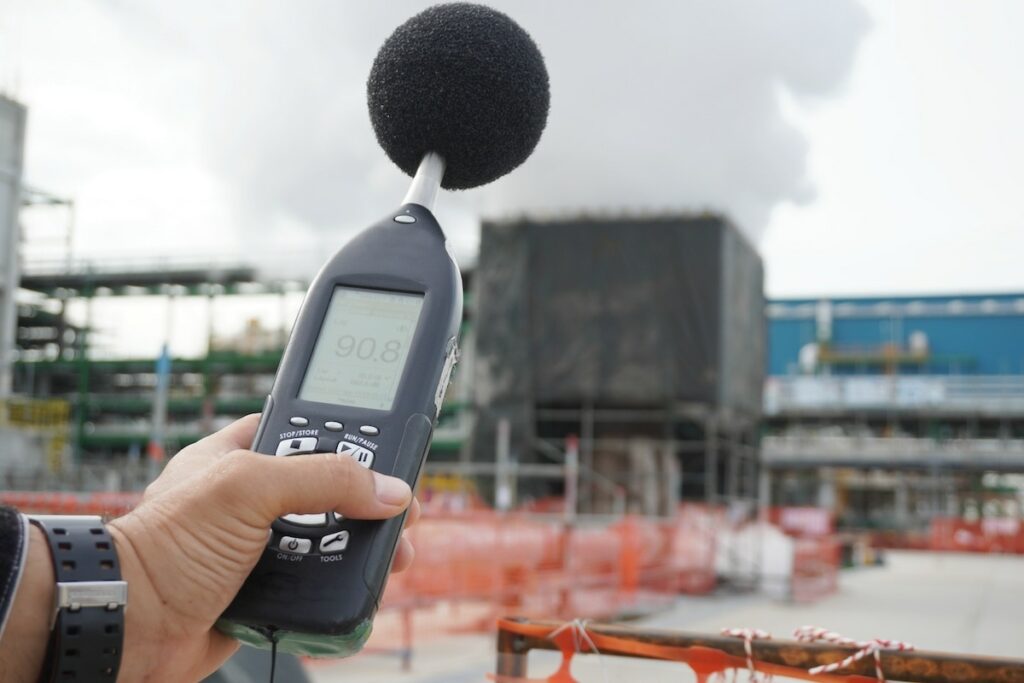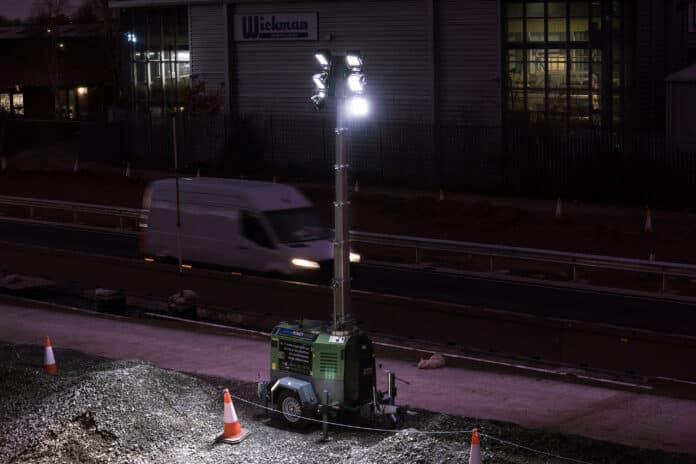Choosing quieter welfare and lighting equipment is just one way the rail industry can reduce noise pollution from major projects, explains Welfare Hire Nationwide’s Veronica Brophy:
When it comes to constructing, repairing and maintaining today’s rail network, noise is unavoidable. However, for the 22 million people living and working within 500m of the railway, it can have a significant impact, causing disruption and distress, and even affecting quality of life. Local wildlife, and those working on-site, are also at risk.
Construction leaders have a responsibility to minimise this noise pollution, and switching to quieter equipment – like eco-friendly mobile welfare units and tower lighting units – is a great place to start.
But how much impact could this equipment actually have? And why is it so important to reduce on-site noise?
The impact of onsite noise
According to medical studies, around 52 per cent of construction workers have been exposed to hazardous noise.² And it’s not just unpleasant; it also harms their health. Roughly 14 per cent of construction workers report hearing difficulty, and 7 per cent suffer from tinnitus.³
This extends to the site’s neighbours, too. A recent report outlined how noise from construction sites can lead to stress, poor sleep and health problems for those living nearby.⁴ The World Health Organisation (WHO), meanwhile, suggests that noise pollution is the second-largest environmental cause of health issues.⁵
The message is clear: noise pollution makes communication harder, reduces wellbeing and negatively impacts people’s health.
This message isn’t lost on the rail industry, which is working to manage the noise associated with construction projects. Indeed, HS2 has committed to controlling noise and vibration on its construction sites via a range of management and monitoring processes.

What can rail construction sites do?
There are a number of ways leaders can reduce on-site noise and help to curb its adverse social effects. They should focus on particularly loud activities, ensuring that their efforts have the biggest impact.
It’s also worth considering when sites will be at their noisiest. Rail works are often scheduled to take place overnight, when the network is less busy. Given that noise restrictions also tend to be stricter in the evenings and at night, reducing noise at this time is imperative.
Equally, the Government’s advice highlights the value of altering design processes to reduce noise, and removing people from the vicinity of noisy work. It also stresses the importance of choosing quieter equipment. And that’s where Welfare Hire can lend a hand.
How Welfare Hire combats noise pollution
Welfare Hire’s innovative lighting towers run largely on battery rather than generator power, and are completely silent whenever the battery is being used. The X-Eco HYBRID LITHIUM lighting tower, for example, can run silently for 36 hours. This means that it can be used all night without creating any noise at all – ideal for overnight possessions.
The lighting tower’s battery can then be charged using a generator, with this generator in use for a fraction of the time it would be running if it was the primary source of power.
Charging can take place during the day, ensuring the impact of the noise is minimal. The unit is also fitted with smart telematics, enabling site managers to check the battery remotely and manage charging around their project’s needs.
Similarly, Welfare Hire’s ECO welfare units are powered by solar energy first, lithium battery second and generator power only as a back-up. This Smart Power management ensures that generator use is roughly ten times less, based on a standard competitor. In the summer, welfare units may be able to run with no generator use at all.
1.https://acousticscompany.com/noise-pollution-costs-the-british-economy-around-20-billion/
2.Kerns E, Masterson EA, Themann CL, Calvert GM. (2018). Cardiovascular conditions, hearing difficulty and occupational noise exposure within U.S. industries and occupations. American Journal of Industrial Medicine, 61, 477-491.
3.Kerns E, Masterson EA, Themann CL, Calvert GM. (2018). Cardiovascular conditions, hearing difficulty and occupational noise exposure within U.S. industries and occupations. American Journal of Industrial Medicine, 61, 477-491.
4.https://ww3.rics.org/uk/en/modus/built-environment/construction/noisy-neighbours–how-building-sites-are-keeping-quiet.html 5.https://www.eea.europa.eu/articles/noise-pollution-is-a-majo



































 0113 2082620
0113 2082620 info@railbusinessdaily.com
info@railbusinessdaily.com 15 Mariner Court, Wakefield WF4 3FL
15 Mariner Court, Wakefield WF4 3FL

